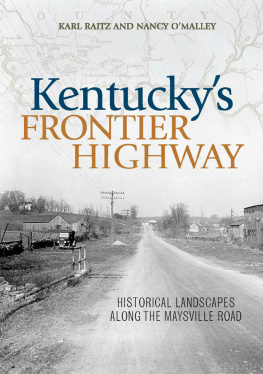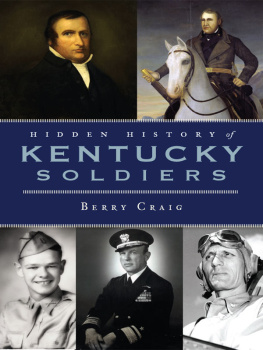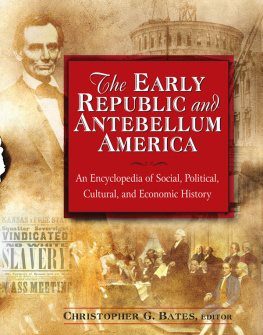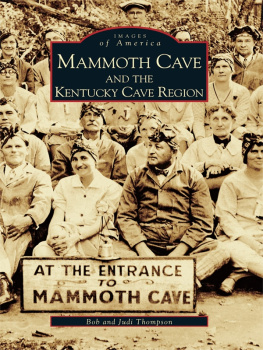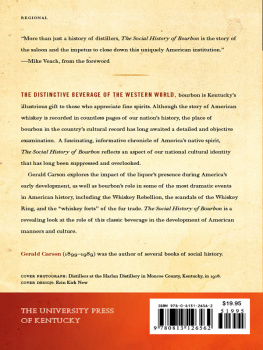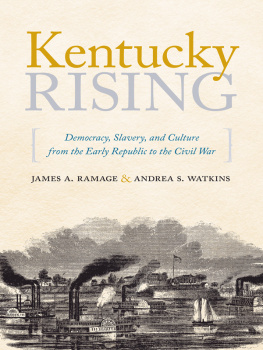Publication of this volume was made possible in part by a grant
from the National Endowment for the Humanities.
Copyright 1999 by The University Press of Kentucky
Scholarly publisher for the Commonwealth,
serving Bellarmine University, Berea College, Centre
College of Kentucky, Eastern Kentucky University,
The Filson Historical Society, Georgetown College,
Kentucky Historical Society, Kentucky State University,
Morehead State University, Murray State University,
Northern Kentucky University, Transylvania University,
University of Kentucky, University of Louisville,
and Western Kentucky University.
All rights reserved.
Editorial and Sales Offices: The University Press of Kentucky
663 South Limestone Street, Lexington, Kentucky 40508-4008
www.kentuckypress.com
The Library of Congress has cataloged the hardcover edition as follows:
The buzzel about Kentuck: settling the Promised Land /
Craig Thompson Friend, editor.
p. cm.
Includes bibliographical references and index.
ISBN-10: 0-8131-2085-3 (cloth: alk. paper)
1. KentuckyHistoryTo 1792. 2. KentuckyHistory1792-1865.
3. Frontier and pioneer lifeKentucky. I. Friend, Craig Thompson.
F454.B89 1998
976.9dc21 98-27466
ISBN-13: 978-0-8131-2085-3 (cloth : alk. paper)
ISBN-13: 978-0-8131-9211-6 (pbk. : alk. paper)
This book is printed on acid-free recycled paper meeting
the requirements of the American National Standard
for Permanence in Paper for Printed Library Materials.

Manufactured in the United States of America.
| Member of the Association of American University Presses |
Foreword
The images of frontier Kentucky have remained etched in the national consciousness. Those enduring views of the First West featured a land not populated by American Indians, an Eden waiting to be claimed, a place of milk and honey. To this Heaven on Earth, first came small bands of Long Hunters who then told of the wealth waiting to be won, and settlers from beyond the mountains soon followed. Daniel Boone, wilderness scout, Daniel Boone, Indian fighter, and Daniel Boone, frontier leader, all became part of the picture. Families braved the dangers, fought hostile forces, built their cabins, and found their dreams. Small yeoman farmers, with their brave and hearty families at their side (if not always visible), lived a good life in the promised land. A few grew wealthy in the rural world and, with the labor of their mostly happy slaves, soon prospered. Out of all that burst forth a new state. So went the image.
But it was a false picture in so many aspects. Many of the parts of that society were covered over with fresh historical paints, hiding the reality of the original oils of memory. Yes, there was much of what the early rhetoric promised. It was a land rich in game, with fertile soils and the rest. But the rhetoric and the vision and, later, the writings of those who chronicled the era also obscured much. The Native American presence and viewpoint, the physical hardships and danger, the mental challenges, the roles of women, children, and blacks, the unfulfilled promises, the lawsuits, the frustrationsall that and more might still be a part of the early picture but would be buried away in some dark, unlit corner of the frontier tapestry spread before Americans.
When I wrote an article surveying the status of writing on Kentucky history, over a decade and a half ago, few of the new waves of historical inquiry had swept across the study of the frontier. Yet, it seemed to me at the time, the sources cried out for just such a study. Some well-used materials could easily yield new insights if given a fresh look; some utilized items simply awaited an eager historical explorer; some accepted and older outlooks needed questioning and challenging.
History too abhors a vacuum, and new historians have moved into the field. More recent studies have shown that the earlier interpretations no longer can serve as faithful guides to frontier and early antebellum Kentucky. A whole series of recent books and articles demonstrate that while there is much very sound in those previous accounts, there is much more to know and to understand. Despite two centuries of writing, the images and the realities of early Kentucky remain as far distant from each other as the seacoast was to those on the frontier, beyond the mountains.
This collection represents an important new study in that evolving reexamination of the early frontier. The result is a nuanced portrayal of a perplexing and complex world, one evolving and changing, one that brings the reality closer and into clearer focus. These essays sometimes support, often refute, and usually redefine ideas about this society and those who lived in it. They demonstrate which parts of the older story still ring true and which ones are hollow echoes of the frontier as it existed.
The Buzzel About Kentuck presents a view of the frontier based on a wider concept of what affected those early European-Americans and African Americansthe American Indian context, the ties to the East, the national markets, the world situation. This book emphasizes the lives of those often ignored on the frontiersettlers south of Green River, workmen, free blacks, African American churchgoers, and women generally. These essays also stress that the western frontier was not specifically of one historical moment. In Kentucky, different frontier societies developed in different ways at different times, according to a whole series of economic, financial, migratory, and governmental factors. There was a frontier not of time but of actions for a century after 1750, and beyond.
These scholars and their essays represent a large part of the core of exciting work being done on the trans-Appalachian west. When you combine their fresh insights with good scholarship and an important subject, the result is what this work isa significant new look at Kentucky and the early American frontier.
James C. Klotter


